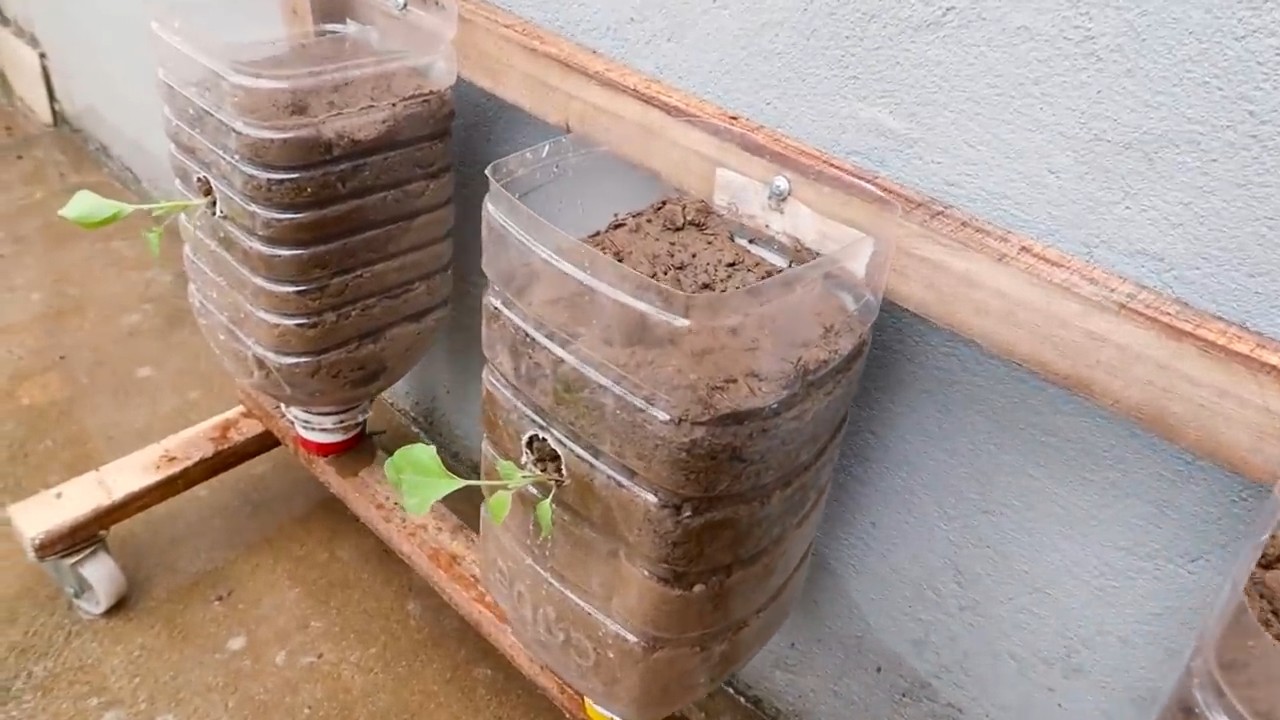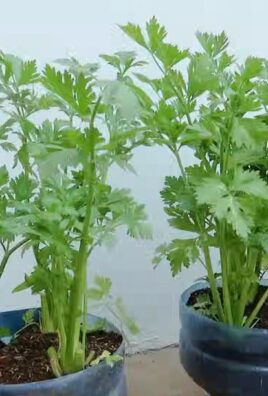Eggplant Cooking Tips and Tricks: Ever stared at a glossy, purple eggplant in the grocery store, dreaming of a delicious meal, only to end up with a bitter, spongy disappointment? Trust me, I’ve been there! Eggplant, while beautiful and packed with nutrients, can be a bit of a culinary challenge. But fear not, fellow food enthusiasts! This isn’t just another recipe collection; it’s your ultimate guide to unlocking the full potential of this versatile vegetable.
Eggplant has a rich history, dating back thousands of years to its origins in India and Asia. It wasn’t always a culinary star, though! In some cultures, it was initially grown for ornamental purposes, its vibrant colors adding beauty to gardens. Over time, however, people discovered its delicious possibilities, and it spread across the globe, becoming a staple in cuisines from the Mediterranean to the Far East.
So, why do you need these eggplant cooking tips and tricks? Because mastering eggplant is a game-changer! Imagine perfectly tender, flavorful eggplant in your ratatouille, creamy baba ghanoush that everyone raves about, or crispy eggplant parmesan that rivals your favorite Italian restaurant. No more bitterness, no more mushiness, just pure eggplant perfection. I’m going to share my tried-and-true secrets to help you avoid common pitfalls and create eggplant dishes that will impress your family and friends. Let’s get cooking!

Unlock Eggplant Nirvana: Your Ultimate Guide to Cooking Delicious Eggplant
Hey there, fellow food adventurers! Eggplant, that beautiful, glossy purple vegetable, often gets a bad rap. People complain it’s bitter, spongy, or just plain blah. But I’m here to tell you, with the right techniques, eggplant can be absolutely divine! I’m going to share all my secrets to transforming this misunderstood veggie into a culinary masterpiece. Get ready to say goodbye to bland eggplant forever!
Understanding Your Eggplant: Choosing and Preparing
Before we even think about cooking, let’s talk about picking the perfect eggplant and getting it ready for its starring role.
* Choosing the Right Eggplant: Look for eggplants that are firm, heavy for their size, and have smooth, shiny skin. Avoid any with blemishes, bruises, or soft spots. The stem should be green and fresh-looking. Smaller eggplants tend to be less bitter and have fewer seeds.
* Types of Eggplant: There are many varieties! Globe eggplants (the classic purple ones) are great for slicing and grilling. Japanese eggplants (long and slender) are perfect for stir-fries. White eggplants are milder in flavor. Experiment and find your favorite!
* The Salting Myth (and When to Skip It): Salting eggplant used to be a must to draw out bitterness. Modern varieties are much less bitter, so you can often skip this step. However, salting *does* help to draw out excess moisture, which results in a better texture, especially if you’re frying or grilling. If you’re short on time or using a very young eggplant, you can probably skip it. If you’re frying, I highly recommend salting.
Step-by-Step: Preparing Eggplant for Cooking
1. Wash and Trim: Give your eggplant a good rinse under cold water. Trim off the stem end.
2. To Peel or Not to Peel?: This is a matter of personal preference. The skin is perfectly edible and adds fiber and nutrients. However, some people find it tough. If you’re grilling or roasting, I usually leave the skin on. If I’m making eggplant parmesan or a dip, I often peel it. Use a vegetable peeler to remove the skin if desired.
3. Slicing or Cubing: How you cut your eggplant depends on your recipe. For grilling or frying, I usually slice it into rounds about 1/2 inch thick. For stews or stir-fries, I cube it into 1-inch pieces.
4. Salting (Optional but Recommended for Frying): Place the eggplant slices or cubes in a colander. Sprinkle generously with kosher salt. Toss to coat evenly. Let it sit for at least 30 minutes, or up to an hour. You’ll see moisture beading up on the surface.
5. Rinsing and Drying: After salting, rinse the eggplant thoroughly under cold water to remove the excess salt. Squeeze out as much water as possible. Pat the eggplant dry with paper towels. This is crucial for achieving a crispy texture when frying or grilling.
Cooking Methods: From Grilling to Roasting and Beyond
Now for the fun part: cooking! Eggplant is incredibly versatile and can be cooked in so many ways. I’ll walk you through my favorite methods.
Grilling Eggplant: Smoky Perfection
Grilling eggplant gives it a wonderful smoky flavor and a slightly charred exterior.
1. Prepare the Grill: Preheat your grill to medium-high heat. Make sure the grates are clean and lightly oiled to prevent sticking.
2. Brush with Oil: Brush the eggplant slices with olive oil on both sides. Season with salt, pepper, and any other spices you like (garlic powder, Italian seasoning, etc.).
3. Grill the Eggplant: Place the eggplant slices on the grill. Cook for about 4-5 minutes per side, or until they are tender and have grill marks.
4. Serve Immediately: Grilled eggplant is best served hot off the grill. It’s delicious on its own, in sandwiches, or as part of a grilled vegetable platter.
Roasting Eggplant: Concentrated Flavor
Roasting eggplant brings out its natural sweetness and creates a wonderfully tender texture.
1. Preheat the Oven: Preheat your oven to 400°F (200°C).
2. Prepare the Eggplant: Toss the eggplant cubes or slices with olive oil, salt, pepper, and any other desired seasonings. I love adding a little balsamic vinegar for extra flavor.
3. Roast the Eggplant: Spread the eggplant in a single layer on a baking sheet. Roast for 20-30 minutes, or until it is tender and slightly browned. Flip halfway through for even cooking.
4. Use in Your Favorite Recipes: Roasted eggplant is fantastic in pasta dishes, salads, dips, or as a side dish.
Frying Eggplant: Crispy and Golden
Fried eggplant is a classic for a reason! It’s crispy on the outside and creamy on the inside. Remember that salting is especially important for this method.
1. Prepare the Eggplant: Follow the salting, rinsing, and drying steps outlined earlier. This is crucial for preventing soggy eggplant.
2. Prepare the Breading (Optional): You can fry eggplant plain, or you can bread it for extra crispness. For a simple breading, whisk together an egg with a little milk. In a separate bowl, combine breadcrumbs (panko works great), grated Parmesan cheese, and your favorite seasonings. Dip the eggplant slices in the egg mixture, then dredge them in the breadcrumb mixture, pressing gently to adhere.
3. Heat the Oil: Heat about 1/2 inch of oil in a large skillet over medium-high heat. The oil is ready when a small piece of bread sizzles and turns golden brown in about 30 seconds.
4. Fry the Eggplant: Carefully place the eggplant slices in the hot oil, being careful not to overcrowd the pan. Fry for about 2-3 minutes per side, or until they are golden brown and crispy.
5. Drain on Paper Towels: Remove the fried eggplant from the skillet and place it on a plate lined with paper towels to drain off excess oil.
6. Serve Immediately: Fried eggplant is best served hot and crispy. It’s delicious on its own, in sandwiches, or as part of eggplant parmesan.
Stir-Frying Eggplant: Quick and Easy
Stir-frying is a great way to cook eggplant quickly and easily. Japanese eggplant works particularly well for this method.
1. Prepare the Eggplant: Cut the eggplant into bite-sized pieces.
2. Prepare the Other Ingredients: Have all your other ingredients prepped and ready to go, as stir-frying happens quickly. This might include chopped vegetables, garlic, ginger, and your favorite sauce.
3. Heat the Wok or Skillet: Heat a wok or large skillet over high heat. Add a tablespoon or two of oil.
4. Stir-Fry the Eggplant: Add the eggplant to the wok and stir-fry for about 5-7 minutes, or until it is tender and slightly browned.
5. Add the Other Ingredients: Add the other vegetables and aromatics to the wok and stir-fry for another minute or two.
6. Add the Sauce: Pour in your favorite stir-fry sauce and cook until it is heated through and the sauce has thickened slightly.
7. Serve Immediately: Serve the stir-fried eggplant over rice or noodles.
Flavor Boosters: Elevating Your Eggplant Dishes
Eggplant is a blank canvas that can take on a wide range of flavors. Here are some of my favorite ways to enhance its taste:
* Garlic: Garlic and eggplant are a match made in heaven. Add minced garlic to your eggplant dishes for a pungent and aromatic flavor.
* Ginger: Ginger adds a warm and spicy note to eggplant dishes. It’s especially delicious in stir-fries.
* Herbs: Fresh herbs like basil, oregano, thyme, and parsley add brightness and freshness to eggplant.
* Spices: Experiment with different spices like cumin, coriander, chili powder, and smoked paprika to add depth and complexity to your eggplant dishes.
* Cheese: Cheese and eggplant are a classic combination. Parmesan, mozzarella, ricotta, and feta all pair well with eggplant.
* Sauces: Tomato sauce, pesto, tahini sauce, and yogurt sauce are all delicious accompaniments to eggplant.
* Lemon Juice: A squeeze of lemon juice brightens up the flavor of eggplant and adds a touch of acidity.
* Balsamic Glaze: Drizzling balsamic glaze over roasted or grilled eggplant adds a touch of sweetness and tanginess.
* Soy Sauce: Soy sauce adds a savory and umami flavor to eggplant dishes, especially stir-fries.
Troubleshooting: Common Eggplant Problems and Solutions

Conclusion
So, there you have it! Mastering eggplant preparation doesn’t have to be a daunting task. By embracing these simple yet effective DIY tricks, you can transform this often-misunderstood vegetable into a culinary masterpiece. We’ve explored the importance of salting to draw out bitterness, the art of selecting the perfect eggplant, and the best cooking methods to achieve that melt-in-your-mouth texture.
Why is this a must-try? Because it unlocks the true potential of eggplant. No more rubbery, bitter disappointments! Imagine serving perfectly cooked eggplant parmesan, creamy baba ghanoush, or flavorful eggplant stir-fries that will impress even the most discerning palates. This isn’t just about cooking; it’s about elevating your entire culinary experience.
But the journey doesn’t end here. Feel free to experiment with different variations. Try using smoked salt for an added layer of flavor when drawing out moisture. Consider marinating your eggplant slices in balsamic vinegar and herbs before grilling for a tangy twist. For a spicier kick, add a pinch of red pepper flakes to your eggplant dishes. The possibilities are truly endless!
We’ve focused on the core techniques for preparing eggplant, but remember that the best cooking often involves a personal touch. Don’t be afraid to adjust the salting time based on the size and variety of your eggplant. Experiment with different herbs and spices to find your perfect flavor profile. And most importantly, have fun in the kitchen!
We are confident that these **eggplant cooking tips and tricks** will revolutionize the way you approach this versatile vegetable. Now it’s your turn to put these techniques to the test. We encourage you to try these DIY tricks and share your experiences with us. Did you find the salting method effective? What are your favorite eggplant recipes? What variations did you try? Let us know in the comments below! Your feedback is invaluable and helps us continue to improve and share the best culinary advice. We can’t wait to hear about your eggplant adventures!
Frequently Asked Questions (FAQ)
Why is salting eggplant so important?
Salting eggplant is crucial for several reasons. First and foremost, it helps to draw out excess moisture from the eggplant. Eggplant has a naturally high water content, which can lead to a soggy texture when cooked. By salting the eggplant, you’re essentially pre-drying it, resulting in a firmer, more appealing texture. Secondly, salting helps to reduce the bitterness that can sometimes be present in eggplant, particularly in older or larger specimens. The salt draws out bitter compounds, leaving you with a milder, more palatable flavor. Finally, salting can also help the eggplant to absorb less oil during cooking, which is especially beneficial when frying or sautéing.
How long should I salt the eggplant?
The ideal salting time depends on the size and variety of your eggplant, as well as your personal preference. As a general guideline, aim for at least 30 minutes, but up to an hour is often recommended for larger or more mature eggplants. You’ll notice beads of moisture forming on the surface of the eggplant as the salt works its magic. After salting, be sure to rinse the eggplant thoroughly under cold water to remove the excess salt and then pat it dry with paper towels before cooking.
What type of salt should I use for salting eggplant?
Coarse kosher salt is generally recommended for salting eggplant. The larger crystals of kosher salt are effective at drawing out moisture without dissolving too quickly. Avoid using iodized table salt, as it can impart a metallic taste to the eggplant. Sea salt can also be used, but be mindful of the grain size, as finer sea salt may dissolve more quickly.
Can I skip the salting step if I’m short on time?
While you can technically skip the salting step, it’s highly recommended that you don’t. Salting significantly improves the texture and flavor of eggplant, making it a worthwhile investment of your time. If you’re truly pressed for time, you can try a quick salting method by sprinkling the eggplant with salt and letting it sit for just 15-20 minutes. However, keep in mind that the results may not be as dramatic as with a longer salting period.
What are the best cooking methods for eggplant?
Eggplant is a versatile vegetable that can be cooked in a variety of ways. Grilling, roasting, frying, sautéing, and baking are all popular options. The best cooking method depends on the desired outcome and the specific recipe you’re following. Grilling and roasting are excellent for achieving a smoky, charred flavor, while frying and sautéing can create a crispy exterior. Baking is a great option for dishes like eggplant parmesan, where the eggplant is cooked in a sauce.
How do I choose the best eggplant at the store?
When selecting eggplant, look for fruits that are firm, heavy for their size, and have smooth, shiny skin. Avoid eggplants with blemishes, bruises, or soft spots. The stem should be green and fresh-looking. Smaller eggplants tend to be less bitter and have fewer seeds than larger ones.
Can I freeze eggplant?
Yes, you can freeze eggplant, but it’s important to properly prepare it first. Raw eggplant doesn’t freeze well, as it can become mushy and watery when thawed. The best way to freeze eggplant is to cook it first. You can roast, grill, or sauté the eggplant until it’s tender, then let it cool completely before freezing it in an airtight container or freezer bag. Frozen cooked eggplant can be stored for up to 2-3 months.
What are some popular eggplant recipes?
Eggplant is a key ingredient in many delicious dishes around the world. Some popular eggplant recipes include eggplant parmesan, baba ghanoush (a Middle Eastern eggplant dip), ratatouille (a French vegetable stew), moussaka (a Greek eggplant casserole), and eggplant stir-fries.
Is eggplant healthy?
Yes, eggplant is a nutritious vegetable that offers a variety of health benefits. It’s low in calories and fat, and a good source of fiber, vitamins, and minerals. Eggplant is also rich in antioxidants, which can help protect against cell damage.
What if my eggplant is still bitter after salting?
While salting usually eliminates most of the bitterness, some eggplants may still retain a slight bitter taste. If this happens, you can try soaking the eggplant in milk for about 30 minutes after salting and rinsing. The milk helps to draw out any remaining bitter compounds. You can also try using a sweeter variety of eggplant, such as Japanese eggplant, which tends to be less bitter than other types.



Leave a Comment